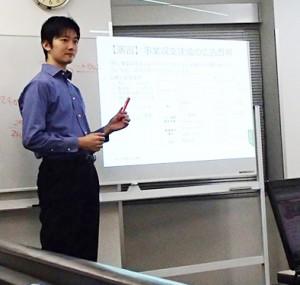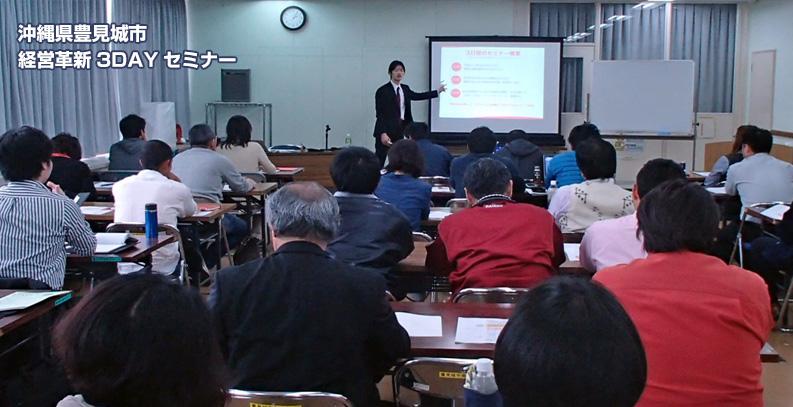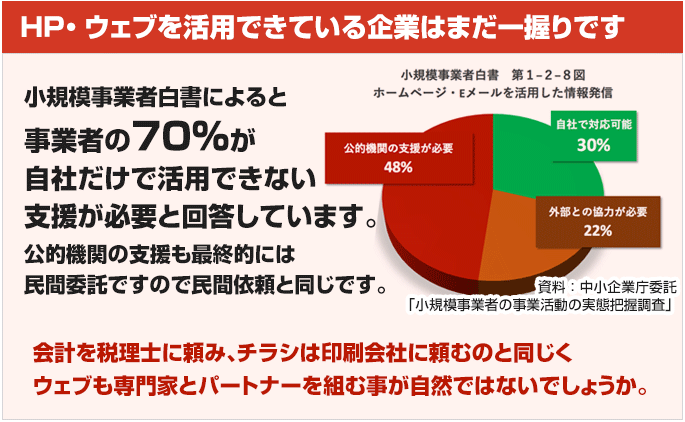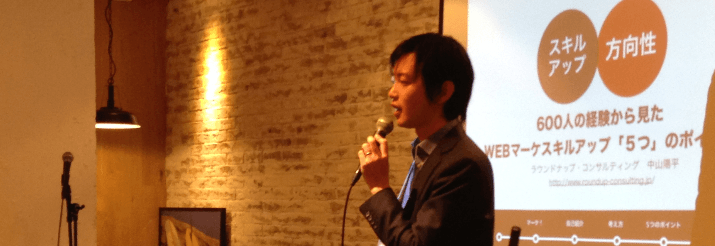The two most important assets of a company are its intellectual assets and the human resources that drive them.
In many cases, companies that appear as success stories on the Internet are actually sleeping on their excellent human resources and are relying on their strength. This is the reason why copying success stories does not work.
But that is the flip side of the coin: it is worthwhile for any company to develop its “intellectual assets” and “human capital. It raises the level of everything. Our seminars are becoming more and more about such things.
When we think of IT-related seminars, we tend to think of skill training, but in many cases, training to improve the bottom line, including non-IT and Web professionals, is more effective.
We recommend multiple training sessions if possible.

If it is difficult to hold more than one seminar, we recommend that you decide which stage of the seminar to focus on. It is difficult to find a seminar that is suitable for everyone, so it is necessary to narrow down the target audience.
Records of past speaking engagements, publications, etc.
→ Please see this page (information on speaking engagements and publications)
About Trainers and Seminar Speakers

The training will be conducted by Representative Director Nakayama.
→ Click here for instructor profiles.
- Consulting experience and track record with 500 small and medium-sized businesses (SMB)
- Conducts monthly web analyst courses and large-scale training for NTT Resonance, Recruit, and other companies.
- Experience also teaching a web consultant training course to train web consultants.
- In-house training and seminars are also held as needed, with content that meets a variety of on-site needs, and satisfaction levels are high.
- At a three-day management innovation seminar held by the Tomigushiro City Chamber of Commerce and Industry in Okinawa Prefecture, the first time a cancellation was made and more people showed up after the second day.
Training Example 1: First Steps in Utilizing the Web for Small and Medium-sized Businesses (SMB)
We provide training to help companies become web-enabled by taking the following steps
We can also cut out a portion of this training and provide one-off training sessions suited to your company’s stage of development.
Assumption: For a typical company, full in-house production is inefficient in terms of both time and cost.

Have you ever had the experience of “I made them do various things, but it doesn’t seem to make much sense…”?
Successful companies are often those that “have the people, goods, and money in-house” or “have a conscientious and competent specialist or company nearby.
And only a handful of success stories will be spread in the media, while many failures that do not appear in the media will not be publicized. This is because otherwise, web/IT companies would not get customers.
Initial: Enable to work with external partners and aim for 70 points.

What is important at this time is to “establish a partner system” and to be able to “inspect and accept orders”. Specifically
- Establish a two-tier system whereby we do what we can do ourselves (e.g., updating the website) and leave the work beyond that to specialists or outside firms.
- To have the ability to communicate our intentions and what we want to do to specialists and outside companies (ordering skills) and to have the ability to ensure that the finished product is what we need (acceptance skills).
It is.

“I feel like I’m getting something different than what I expected, but
the experts say it’s good, so it must be good.”
and enter a vicious cycle where they continue to use the wrong things and fail to achieve results.
Again, “in-house production” is only possible for companies that are able to provide a certain amount of “human, material, and financial resources” on their own.
For other companies, it is best and most efficient to “find the right partner” and “make sure that the order and acceptance inspection can be performed” first, and then proceed with the use of the Web with the help of experts.
Goal: Slowly and steadily work toward 100 points.
Then, once such a foundation is in place, we steadily build on top of it.
This is when the various technical details have their greatest effect.
If you are going to do something technical from the beginning, it works best if you have players and teams who already have the know-how and skills in the field. It can be effective as a know-how seminar. However, if you want to have an impact on the entire company, it is too early to tell.
Appendix 1: What you get from the process is great

As a business owner myself, I understand your desire to do something that will lead to immediate sales, but ideally, I would recommend that you continue to do so in this manner.
Appendix 2: Internal communication is also an extension of this
The same composition applies to “sales vs. production,” “management vs. leaders or players,” etc., which are common within a company.
If order acceptance and inspection with external parties can be performed properly, internal interactions will naturally become smoother as well. Combining such a perspective with acceptance and inspection will enable stress-free interactions both internally and externally, and will also increase work efficiency.
Training Example 2: Technical Training

For example, there is a great need for this type of training these days.
- SEO and trends to keep up with in 2016 and how to incorporate them into actual production
- Key points of operation and management of listing ads, synergy with social media ads, etc.
- How small and medium-sized businesses(SMB) should create and operate content
- Web production teams and production companies today and how to create revenue streams
Also, as initial training and new employee training, etc.
- Comprehensive summary of all aspects of web marketing
- Basic view of access analysis and operational management
- Basics of company analysis, competitor analysis, customer analysis, and workframe utilization
- What is Inbound Marketing? Differences from Traditional Marketing
- How local businesses combine web and offline to generate revenue
We also offer seminars to train web consultants (Specialist Training).
We may not be able to provide services depending on our areas of expertise, areas of weakness, or business type.
Training recommendations: the earlier you start, the better off you are!
Only a handful of small and medium-sized businesses (SMB) and even large companies are still making proper use of the Web. Therefore, it is important to start early and quickly accumulate knowledge within your company.
The figure below is based on data from the 2015 White Paper on Small Business published by the Small and Medium-Sized Business Administration (SMB) and summarizes the status of web use by small and medium-sized businesses (SMB). It shows that as many as 70% of companies are not utilizing the Web.
I am sure we can help you.
I would also like to help you in your efforts to eliminate companies that cannot utilize the Web from Japan.
Please let us know what you are looking for by filling out the inquiry form. We would be happy to discuss the details with you.






